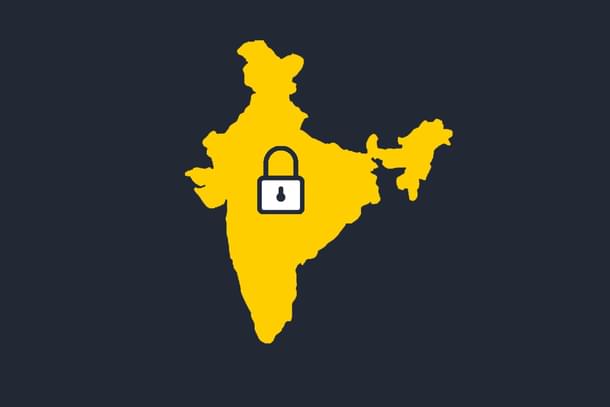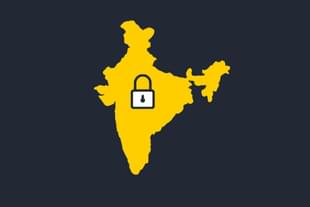Commentary
We Can’t Afford A Lockdown Beyond 3 Weeks; Health Pandemic Can’t Become Economic Pandemic
R Jagannathan
Mar 27, 2020, 12:49 PM | Updated 12:49 PM IST
Save & read from anywhere!
Bookmark stories for easy access on any device or the Swarajya app.


As a blunt instrument, it also means that the lockdown will cause collateral damage, and this is the hard choice governments will have to deal with after 14 April.
The announcement of a Rs 1.7 lakh crore package to help put food and cash in the hands of the poor by the Modi government has sent tongues wagging. Since the measures have an initial ambit of three months, there is suspicion that the current 21-day lockdown to prevent the spread of the Covid-19 virus may well be extended.
With the Reserve Bank Governor also announcing a three-month moratorium on interest payments to banks along with related regulatory forbearance, many people will be wondering if the lockdown can indeed extend beyond the three weeks announced by the Prime Minister last Tuesday (24 March).
While no one can predict if the lockdown will continue after 14 April or not, one has to start by pointing out that the government needs to make good use of the lockdown to prepare for whatever comes later.
To start with, here are a few assumptions and speculations that sound logical.
First, no one out there is claiming that infection rates will come down to zero by mid-April, when the lockdown ends. The best the health authorities are hoping for is a flattening of the curve of rising infections and deaths in the coming weeks. This means, the virus will continue to remain with significant parts of the population, whether in isolated pockets, or in some kinds of the demography, or in specific states.
What the lockdown has done is bought us time, time to find better answers than the one we have used to prevent the spread of the infection from the currently estimated thousands to millions of our people.
As at the end of 26 March, India had 694 confirmed cases of Covid-19 infections and 16 deaths. It is more than likely that the actual numbers are far, far higher. As more testing gets underway and community transmission intensifies despite the lockdown, we have to be prepared for a longer fight.
Second, the Indian state takes a long time to get its act together on ensuring logistics, availability of essentials, and provision of basic healthcare even to those already diagnosed with Covid-19.
Given the federal character of India, where the Centre can announce policies but states may take their own time to reach that message to the last mile, the best we can hope for is that by the end of the lockdown, state capacity will have improved significantly to deal with the challenges that lie ahead. We have to use the 21-day breather to make the state better prepared for dealing with a larger crisis, both in healthcare and in the economy.
Third, the lockdown is damaging large parts of the economy as the primary intention is to slow down the spread of the virus. But the economic lockdown cannot continue beyond the three weeks that end by mid-April; if it continues, the ability of the country and its people to earn a living and take care of their physical health will deteriorate. Physical health is closely linked to economic health.
While government help and support will ameliorate the lot of the poor in the short term, if goods and services are not produced in adequate quantities by end-April, even state capacity to help the poor with freebies will reduce and finally vanish. The ability of India to help its poor depends on its ability to end the economic lockdown as soon as possible. State capacity to fund and organise help to the needy depends largely on its own solvency; that solvency depends on economic activity picking up.
The lockdown - to repeat - is a blunt instrument, not a surgical strike. It may reduce the rate of rise of the infection, but it will not stop it in its tracks. As a blunt instrument, it also means that the lockdown will cause collateral damage, and this is the hard choice governments - both at Centre and states - will have to deal with after 14 April.
The policy options that will emerge by mid-April depend on the formal Covid-19 numbers around that time and the steepness of the graph of the spread of the pandemic. The options widen if the worst is over; they will narrow if the lockdown has not substantially moderated the rise of the infection.
The choices we will have to make are clear even now.
#1: If millions remain infected, whether formally or asymptomatically, the health system will be forced to choose between whom to lavish its scarce resources on and whom to give the go-by. This is the painful choice doctors are having to make in Italy, where the older sufferers are being told to pray and hope for the best even as hospital facilities are focused on those who can recover faster with less help (ie, the young).
#2: The choice will be between extending the general lockdown or narrowing it to more specific regions and people who are most impacted by it. For example, right now Maharashtra and Kerala have the most numbers of Covid-19 cases, but Karnataka, Telangana, Haryana, Gujarat and Punjab may be the next surge states. As the epicentres of Covid-19 keep shifting, we will need a national healthcare plan as much as state-wise plans.
If testing kits, hospital beds, respirators, masks and the cocktail of medicines used to deal with the infection are scarce, it would make sense to move men and material from one state to another depending on which ones are currently facing the brunt of the crisis. If we fall into state-wise silos, and (say) Odisha refuses to send excess ventilators to Telangana because it may need them for its own people in future, it would worsen the mortality rates at the cost of making some states look better.
Of course, the need to raise the production and availability of beds, ventilators, masks and medicines is paramount, but in a given situation of shortage, moving available supplies temporarily from surplus areas to deficit areas would help.
#3: We need an economic plan that allows for a steady restarting of most sectors one by one, with precautions being built-in. It is difficult to see how transport - flights, trains and buses - can be stopped beyond three weeks. People have to move, both for work and personal reasons, and there is no way we can stop transport endlessly after 14 April. We must plan to start them even earlier, but plan the resumption in such a way as to minimise the spread of infection.
We have already seen heart-rending cases of poor people, helpless people, struggling to get back to their villages on foot without food and transport; we cannot afford to let them make a similarly painful return trip in search of jobs and incomes after the lockdown ends. If the economy does not get back on its feet and facilitate mobility, people cannot too.
The immediate focus is to get the supply chain for essentials moving to where it is needed. But ask yourself: can you supply milk and veggies to everybody without getting the packaging and transport industries geared up too? Can you get food to people without letting delivery boys roam around town on their bikes? Can these bikes work without garages that handle repairs and petrol stations that supply fuel? Can garages function without the supply of essential parts, which means auto ancillaries need to produce some minimum level of output even in the short run. Can doctors get masks and ventilators and personal protection equipment which use multiple raw materials, when these raw materials themselves sound like non-essential items from the production viewpoint?
Every essential service has some seemingly non-essential input going into it. So, the only remedy is to think how soon we can get all parts of the economy going, no doubt after taking due care to prevent excess infections.
My conclusion is this: we cannot afford to continue the lockdown beyond 21 days. We have to use the time to prepare to bring the economy upto speed, even if the downside is a larger number of infections in the short run. We cannot allow a health pandemic to become an economic pandemic. An economic pandemic will make the health pandemic impossible to fix without huge collateral damage and social chaos.
Jagannathan is former Editorial Director, Swarajya. He tweets at @TheJaggi.





